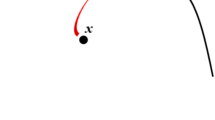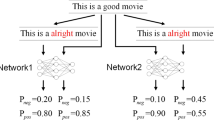Abstract
In this paper, we propose a novel white-box attack against word-level CNN text classifier. On the one hand, we use an Euclidean distance and cosine distance combined metric to find the most semantically similar substitution when generating perturbations, which can effectively increase the attack success rate. We’ve increased global search success rate from 75.8% to 85.8%. On the other hand, we can control the dispersion of the location of the modified words in the adversarial examples by introducing the coefficient of variation(CV) factor, because greedy search sometimes has poor readability for the modified positions in adversarial examples are close. More dispersed modifications can increase human imperceptibility and text readability. We use the attack success rate to evaluate the validity of the attack method, and use CV value to measure the dispersion degree of the modified words in the generated adversarial examples. Finally, we use the combination of these two methods, which can increase the attack success rate and make modification positions in generated examples more dispersed.
Access this chapter
Tax calculation will be finalised at checkout
Purchases are for personal use only
Similar content being viewed by others
References
Cheng, Y., Jiang, L., Macherey, W.: Robust neural machine translation with doubly adversarial inputs. In: Proceedings of the 57th Annual Meeting of the Association for Computational Linguistics, pp. 4324–4333. Association for Computational Linguistics, Florence, July 2019. https://doi.org/10.18653/v1/P19-1425, https://www.aclweb.org/anthology/P19-1425
Ebrahimi, J., Rao, A., Lowd, D., Dou, D.: HotFlip: white-box adversarial examples for text classification. In: Proceedings of the 56th Annual Meeting of the Association for Computational Linguistics (Volume 2: Short Papers), pp. 31–36. Association for Computational Linguistics, Melbourne, July 2018. https://doi.org/10.18653/v1/P18-2006, https://www.aclweb.org/anthology/P18-2006
Jia, R., Liang, P.: Adversarial examples for evaluating reading comprehension systems (2017)
Kim, Y.: Convolutional neural networks for sentence classification. CoRR abs/1408.5882 (2014). http://arxiv.org/abs/1408.5882
Kuleshov, V., Thakoor, S., Lau, T., Ermon, S.: Adversarial examples for natural language classification problems (2018). https://openreview.net/forum?id=r1QZ3zbAZ
Kusner, M., Sun, Y., Kolkin, N., Weinberger, K.: From word embeddings to document distances. In: International Conference on Machine Learning, pp. 957–966 (2015)
Lei, Q., Wu, L., Chen, P.Y., Dimakis, A.G., Dhillon, I.S., Witbrock, M.: Discrete adversarial attacks and submodular optimization with applications to text classification (2019)
Li, M., Sun, Y., Su, S., Tian, Z., Wang, Y., Wang, X.: DPIF: a framework for distinguishing unintentional quality problems from potential shilling attacks. CMC-Comput. Mater. Continua 59(1), 331–344 (2019)
Liang, B., Li, H., Su, M., Pan, B., Shi, W.: Deep text classification can be fooled. In: IJCAI (2018)
Rubner, Y., Tomasi, C., Guibas, L.J.: A metric for distributions with applications to image databases (1998)
Szegedy, C., et al.: Intriguing properties of neural networks. arXiv preprint arXiv:1312.6199 (2013)
Tsai, Y.T., Yang, M.C., Chen, H.Y.: Adversarial attack on sentiment classification. In: Proceedings of the 2019 ACL Workshop BlackboxNLP: Analyzing and Interpreting Neural Networks for NLP, pp. 233–240. Association for Computational Linguistics, Florence, August 2019. https://doi.org/10.18653/v1/W19-4824, https://www.aclweb.org/anthology/W19-4824
Wang, W., Tang, B., Wang, R., Wang, L., Ye, A.: A survey on adversarial attacks and defenses in text. CoRR abs/1902.07285 (2019). http://arxiv.org/abs/1902.07285
Yang, P., Chen, J., Hsieh, C.J., Wang, J.L., Jordan, M.I.: Greedy attack and gumbel attack: generating adversarial examples for discrete data. arXiv preprint arXiv:1805.12316 (2018)
Zhang, W.E., Sheng, Q.Z., Alhazmi, A., Li, C.: Adversarial attacks on deep learning models in natural language processing: a survey. arXiv preprint arXiv:1901.06796 (2019)
Zhang, Y., Cheng, Q.: An image steganography algorithm based on quantization index modulation resisting scaling attacks and statistical detection. Comput. Mater. Continua 56(1), 151–167 (2018)
Zhao, S., Cai, Z., Chen, H., Wang, Y., Liu, F., Liu, A.: Adversarial training based lattice lstm for chinese clinical named entity recognition. J. Biomed. Inform. 99, 103290 (2019)
Zhao, W., Li, P., Zhu, C., Liu, D., Liu, X.: Defense against poisoning attack via evaluating training samples using multiple spectral clustering aggregation method. CMC-Comput. Mater. Continua 59(3), 817–832 (2019)
Zhao, W., Long, J., Yin, J., Cai, Z., Xia, G.: Sampling attack against active learning in adversarial environment. In: Torra, V., Narukawa, Y., López, B., Villaret, M. (eds.) MDAI 2012. LNCS (LNAI), vol. 7647, pp. 222–233. Springer, Heidelberg (2012). https://doi.org/10.1007/978-3-642-34620-0_21
Author information
Authors and Affiliations
Corresponding author
Editor information
Editors and Affiliations
Rights and permissions
Copyright information
© 2020 Springer Nature Switzerland AG
About this paper
Cite this paper
Du, X. et al. (2020). Generating More Effective and Imperceptible Adversarial Text Examples for Sentiment Classification. In: Sun, X., Wang, J., Bertino, E. (eds) Artificial Intelligence and Security. ICAIS 2020. Lecture Notes in Computer Science(), vol 12239. Springer, Cham. https://doi.org/10.1007/978-3-030-57884-8_37
Download citation
DOI: https://doi.org/10.1007/978-3-030-57884-8_37
Published:
Publisher Name: Springer, Cham
Print ISBN: 978-3-030-57883-1
Online ISBN: 978-3-030-57884-8
eBook Packages: Computer ScienceComputer Science (R0)




